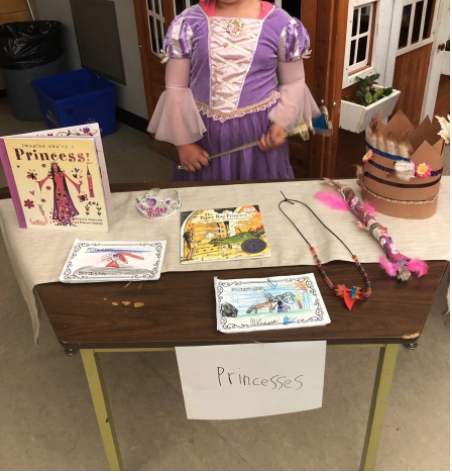There is no better feeling than “getting lost” in something you deeply care about. Whether it be a running race you are competing in, an art project you have been working on for months, a Mother’s day gift you excitedly finish for your mom, or a loose part creation you are making to demonstrate your understanding, you can “become lost” in something that you deeply care about and are intrinsically motivated to finish. This is “flow,” and is ultimately what every teacher wants their learners to experience in their learning.
I have been lucky enough to witness “flow” in my classroom. It is a magical experience. The room hums with creativity and engagement and everyone is focussed on their desired task because they want to be doing it. Flow was extremely present in a magic/mythical inquiry which we dove into in our Kindergarten/Grade One space. Learners chose what they were interested in: Fairies, Knights, Princesses, Unicorns and Dragons and were grouped accordingly. They then set off to learn everything they could about their choice using books, asking experts and consulting media such as youtube. Once they investigated, we began designing and planning to create a museum where we could share our learning and teach about these magnificent things. We used Instagram and Pinterest to generate ideas for artifacts that we could make for each group for our museum night where our “grown ups” would be present.
The fairies chose to make fairy houses and fairy dust.

The dragons made dragon eyes, paper chain dragons and a collaborative dragon den.

The Princesses made crowns, necklaces, wands and painted a huge paper castle which a friend brought in.

The knights made shields, catapults and swords.

Finally the unicorns made toilet paper unicorns, puppet unicorns, wove yarn on a unicorn horn and made a collaborative backdrop that we could hang their paper roll unicorns from.

Below is a youtube link to our museum night presentation. I have never seen learners so proud, engaged and excited to share their learning as I did in this inquiry. You will see and hear this at the end of the video.
Note: Somehow my camera went into slow motion so feel free to move the bar ahead where it is slow.
As Flow Theory suggests, in order to create flow, a teacher must ensure that, “a task is intrinsically motivating, that they have set clear goals and a sense of progress with their learners, provided clear and immediate feedback, have the challenge match perceived skills, allow for agency or control over task, as well as instigate an intense focus on the present moment” (Henshone, 2019). I feel as though I had implemented all the principles of flow theory into my teachings here in hopes to motivate and engage my learners. Not only did I use Flow Theory, but I unknowingly used the modality principle to enhance learning as well. I used images to guide my oral teaching and videos to offer connections to the words I spoke. We read stories which aided the learners to retain the information by making connections and by inspiring them to get involved and to create.
Meyer mentions how, “if you add graphics you can greatly improve peoples performance on problem solving transfer tests” (Meyer, 2020). When reflecting on this inquiry, I now believe that, by adding the visuals that I did to this learning, my learners were able to store the intended information deep in their memories. I know this because when it was time to share their knowledge with their “grown ups” on our museum night, they recalled and shared the information almost effortlessly. Knowing and better understanding the multimedia principles, dual Coding and flow theory, as well as experiencing these in my field of work, will better allow me to design my teachings so that concepts can be better received for my learners. The intent is to create flow and ease of storage of information for our leaners. Therefore, I intend to do this in the future using the understanding I now have of multimedia design for learning.
First attempt on Screencasting:

Here is my second go! I moved my picture, I closed the tool box, and changed my wording. I noticed I said, “parent” and I prefer saying, “grown-up” as some children are looked after by their grandparents, aunts, foster parents, etc…

Citation:
Henshon S.E. (2019) Reflections on the Flow of Life: An Interview With Mihaly Csikszentmihalyi, Roeper Review, 41:3, 153-155, DOI: 10.1080/02783193.2019.1622487
Mayer, R., & Fiorella, L. (2014). Principles for Reducing Extraneous Processing in Multimedia Learning: Coherence, Signaling, Redundancy, Spatial Contiguity, and Temporal Contiguity Principles. In R. Mayer (Ed.), The Cambridge Handbook of Multimedia Learning (Cambridge Handbooks in Psychology, pp. 279-315). Cambridge: Cambridge University Press. doi:10.1017/CBO9781139547369.015
